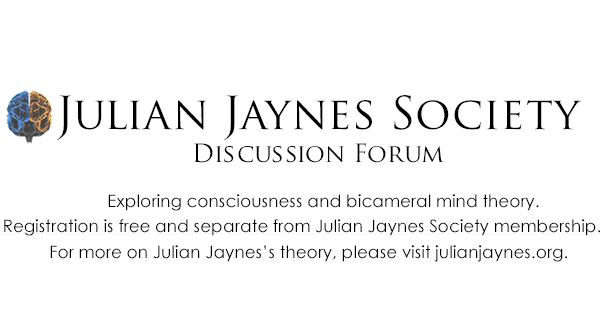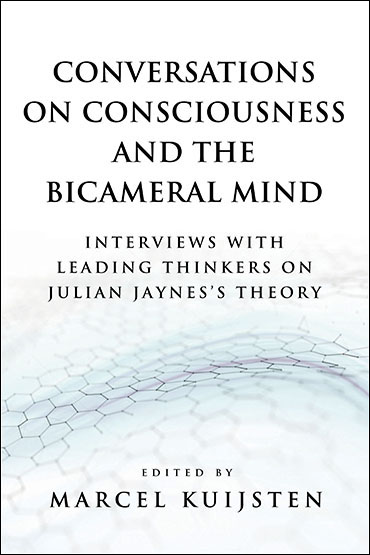How to Make a Conscious Chess-Player Machine: Making Artificial Intelligence out of Julian Jaynes’ Theory
Arash Daklan, paper presented at The Julian Jaynes Society Conference on Consciousness and Bicameral Studies, Charleston, WV, June 2013.
Abstract: A very simple, or let me call it a “simplistic,” model has been presented in order to meet two main goals. The first one is to give a functional and structural definition of what “consciousness” is; instead of many difficult and vague quasi-definitions presented in the literature. The second is that this model permits us to retrospectively understand what could have happened in our ancestral environment forcing us to evolve “consciousness.” It is highly probable that we will be able to use this understanding to modify our model and use it to understand our ancestral environment again, in a much better way, and again use this understanding to modify our model, and so on. I prefer to call this model a “Simplistic Model” just in order to make the doors open for other aspects of consciousness that probably have not been discussed here or maybe cannot be caught up via this model, but I hope that this model will have essentially enough potential to be completed step by step in order to embrace all other aspects of consciousness also; let me call this process complexification of the model.
This model will be used to justify some aspects of Jaynes’s bicameral mind theory. The model will be used to justify how and why consciousness, as Jaynes insists, is related to language and why its emergence is recent in human evolutionary history. The functional independence between consciousness and the entire body of the complex human civilization has been discussed and has been reasoned in what aspects this idea is true and why. It has been also used to show how and why the ideas like David Chalmers’ Twin Earth metaphor to deduce the consciousness’ independence from physical properties of matter are flawed.
The paper will be presented in four parts. In the first part, I will discuss clearly what aspects of Julian Jaynes’s theory I am using. So, exempt from the ideas I have clarified, the paper is essentially neutral to all other aspects of Jaynes’s theory. In the second part I will give a specific interpretation of Turing Test in order to disclaim ideas presented in the forms such as famous John Searle’s Chinese Room, and to show in what aspects their approach toward the problem of consciousness is not at all consistent with Turing Test. In the third part, I will explain the essentially testable simplistic model based on which I will show how Julian Jaynes’s theory can be used for modeling consciousness. Finally, in the last part I will argue that why and how Julian Jaynes’s use of Trojan War as the approximate frontier between Greek Zombies (as Jan Sleutels, 2006, has used the term) and the conscious humankind is, at least, a very good metaphor of what has indeed taken place for the consciousness to come to existence. I will discuss, based on the presented model, what exactly are the two cameras in the “bicameral mind” theory of Julian Jaynes; he has clarified that interpreting the two hemispheres of the brain as the two cameras in his theory is a misinterpretation (for an example see Julian Jaynes, 1986). I will discuss also in what aspects John Searle is right when he argues that consciousness is not the software installed on the brain; Jaynes also warns us that when we use this metaphor we should be aware of its limits. I will also show why Searle is not right relating consciousness to the specific matter out of which our brains are made.
Please sign up or login to watch the full version in the JJS Member Area.
Julian Jaynes Society Forum: Exploring Consciousness and Bicameral Mind Theory
Registration is free and separate from Julian Jaynes Society membership.
Julian Jaynes Society Forum: Exploring Consciousness and Bicameral Mind Theory
Registration is free and separate from Julian Jaynes Society membership.


